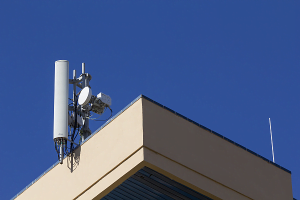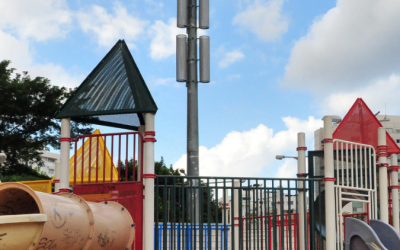As demands on the Internet continue to grow, an in-depth look at the future cell site towers needs to be addressed, especially with IoT that sees homes become increasingly “smart” with the demand for transmission equipment continuing to grow. How will this growth happen? Where will transmission towers be located? What are the cost factors and are any innovations likely to come online soon? Are cell towers even going to be needed?
The base for everything on the Internet is power. Something must generate the electricity for transmission, whether through fiber optic lines or radio waves. How much power is not even a question as engineers know exactly how much it takes to send any signal any distance through any medium.
The power needs for individual devices, think smartphone, smart thermostat and such, is tiny. However, the power demands for several of these devices increase. Bump that number to the hundreds and thousands and power demands jump a lot. The future cell site towers is that they are going to need a LOT of power to handle that volume of data traffic.
Simply put, a pocket-sized battery will not deliver the volts and amperage needed to receive and transmit signals from more than 1,000 devices. “Cell towers will become obsolete only when Chevy Suburban’s and Ford F-150’s can drive down the Interstate at 70 MPH fully powered by solar panels made in the USA. The demand for bandwidth is growing faster than the carriers can sell smart phones. Even if they came up with some amazing technology that could replace cell towers, it would easily take 10 years or more to implement.” Some may point to signal boosters to handle the need for more and stronger transmissions.
More Power
Signal boosters require more power. That must come from somewhere. The demand on the already-stressed power grid will just get worse. Individually, the power draw may be minuscule. Added together, it becomes a real issue. A straw broke the camel’s back. Battery advances over the past 30 years are huge, but battery output is still directly tied to the size of the battery. You can’t run a golf cart on a dozen D-cell flashlight batteries.
FCC Regulation
The Federal Communications Commission controls radio wave broadcasts including that done by wireless devices. It regulates signal boosters now. “Malfunctioning, poorly designed, or improperly installed signal boosters can interfere with wireless networks and result in dropped or blocked calls, including emergency and 911 calls,” says an FCC Consumer Guide to signal boosters. As more and more devices go wireless, the chances for interference are going to grow.
Future Cell Site Towers in Aesthetic Landscapes
The demand for towers is not going away. Vertical Consultants tracks cell tower agreements and reports the industry is growing. “So again, if cell towers were about to become obsolete, why would the industry leaders be investing billions of dollars to acquire the rights to your cell tower? The answer to this situation is that technology is nowhere near close to finding an economic and reliable replacement for the future cell site towers, and your individual site lease has value to the acquiring company!” .
 However, the look and location of these towers is changing. So, a better description for a cell tower is “transmission hub,” or hub for short. Increasingly municipalities are rejecting the look of giant antenna arrays.
However, the look and location of these towers is changing. So, a better description for a cell tower is “transmission hub,” or hub for short. Increasingly municipalities are rejecting the look of giant antenna arrays.
The industry is responding. “Cell tower companies like Crown Castle are installing small cells for carriers’ use on light poles, on top of shopping centers and other places where they fit in with the urban scenery. In 2010, Crown Castle acquired New Path Networks, which built the nine-antenna medical center system. Where and what these smaller hubs are might surprise you. Twisted Sifter has a list of these different types of antenna hubs.
These hubs still require space, which means buying or leasing that space. A smaller footprint likely will translate into smaller lease payments, but more hubs also mean more leases. Savvy negotiators are going to win this one.
Future Cell Site Towers gets Creative
The demands on the wireless networks and high-speed broadband Internet are only going to grow. Consumers have already shown they are willing to pay for the service. Creative thinking will dominate the industry as it moves forward. ISPs must step up their transmission capabilities. The tower manufacturers are already headed in the right direction with smaller hubs that are not eyesores. With the increase in transmission/reception sites, the demand for real estate to plant these hubs is also going to grow.
Future cell site towers are small hubs, more hubs and hidden hubs are the demands. Companies that make these hubs are in the driver’s seat. They determine the power needs and appearance. Location is going to be set by ISPs or cell companies and real estate owners.

